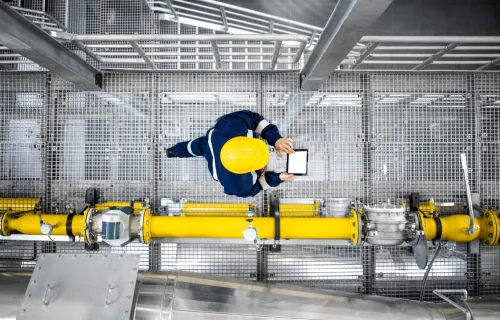As utilities around the world navigate the path to digitalization, addressing growing customer expectations, the pressure to move to a low carbon economy, and changing operating and business models has become critical.
Even in regions with no or low competition, the business model for utilities is changing dramatically. Utilities and energy retailers are looking to morph from providing energy as a commodity to offering value-add energy services. In addition, managing and operating renewable generation has become the new norm, and utilities are now under pressure to not just maintain, but also enhance uptime and availability.
To keep up with these new demands, utilities need to ensure new products and services are attractive and sustainable; and to achieve this, their business models will need to evolve accordingly. However, how do you bundle present and future services while maintaining current systems and adding new ones?
Viewing the asset as the “customer”
One approach used by a large U.S. utility, with multiple regional local distribution company (LDC) assets, is to shift how it views assets in terms of the work they do and the teams that perform the work; for example, teams that perform field work such as the installation, maintenance and repair of network assets. This view of assets is a departure from the norm and suggests an alternative way of thinking. With this approach, what if…
- An asset becomes the “customer”?
- Field work becomes the “package”?
- Crews become the “delivery teams”?
Instead of inanimate objects, utilities view their assets as “customers” with needs, a sense of urgency and an important role to play in the value chain. Work also has a different value; it is a product and it has an expected outcome. As such, “deliveries” must be optimized, scheduled and completed on time to meet the needs of the “customers.”
By applying machine-to-machine (M2M) learning, the asset or “customer” provides real-time information on the specific work required to maintain service. M2M analytics found in solutions such as CGI’s Sm@rtering , ARM and Pragma optimize data inputs from smart meters, asset conditions and customer outages to clearly target issues and automatically develop field work “packages” for dispatch. The system then assigns the optimal number of crews to do the work and schedules the “delivery” for the “customers,” leading to reduced OPEX and improved uptime.
Many LDCs have perfected their manual processes and are now looking to automate processes between the back office and the field. In this scenario, continual improvement and learning is key, where back office and front office person-to-person (P2P) processing is reduced to the absolute minimum and new M2M analytics and processes are maximized.
This model heralds a shift from analytics-to-person (A2P) to analytics-to-machine (A2M), where machine learning and artificial intelligence directly control systems, without human intervention. Humans are kept in the loop on what action needs to be taken and why, but are excluded as decision points for real-time operations, simply because we just take too long. Quality analysis and data are the key differentiators in these new models. However, with an ageing industry workforce, the challenge is to convert corporate human know-how into M2M processes, while keeping experienced workers on the payroll.
To be successful, workforce and asset systems must have accurate data related to GPS, asset definitions and asset attributes, like the telecommunications industry does already. Developing common work processes will, in turn, reduce operations and maintenance (O&M) outflows and improve Customer Average Interruption Duration Index (CAIDI) numbers.
Building an end-to-end process framework
By its sheer nature, automating even a poor process will still deliver business benefits. The real success however, will lie in building a framework that takes into account the complete end-to-end “supply chain,” all the way from production to final bill payment. Here’s where robotics and rapid data processing serve as key elements.
Such a framework will enable you to look at each element of the entire process, whether it is M2M, machine-to-person (M2P), person-to-machine (P2M), or B2C to optimize each of the separate steps, while still maintaining a view of the whole chain. Even if the processes are performed by different groups or external contractors, the complete end-to-end process can be optimized with a 360-degree view. A deep understanding of customers, assets, workforces and business impacts will drive this framework, all of which are intended to answer the overarching question—are the customer’s needs being met?
Through this model, a utility will be able to deliver work directly to an asset with the greatest possible efficiency, and data will be king. Organizations that understand this new paradigm and adapt to what their data is telling them will emerge the winners. It is important, however, to see this not as a one-time transaction, but to apply it every minute of every day.
As the 2018 CGI Client Global Insights reveal, the single biggest challenge to change is not technical limitations, but the culture of the organization. To drive enterprise-wide change, such as this new view of assets, companies must be nimble and open to change, and this must start with addressing the culture first.





